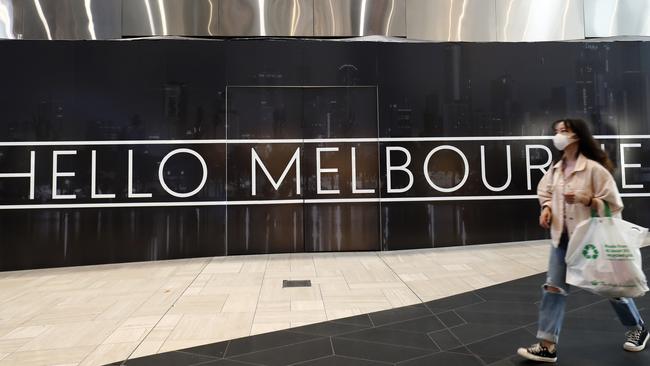COVID-19 is bad, but there was no panic when 1255 died in Australia during severe flu
When a severe bout of flu killed more than 1200 Australians three years ago we didn’t panic and crash the economy. We can’t fight the coronavirus this way forever and must rethink how to protect the vulnerable.

Andrew Bolt
Don't miss out on the headlines from Andrew Bolt. Followed categories will be added to My News.
So far this coronavirus has killed just seven Australians. But three years ago we kept partying as 1255 died from a particularly severe flu.
There was no panic back then. No airlines stopped flying. No governments warned us to keep a social distance. And we didn’t let the economy crash.
I’m not saying we are overreacting now. Not at all.
Not yet, at least.
This latest virus seems at least 10 time more deadly than flu if you get it, and we don’t understand it enough to take any chances and stop what we’re doing.
Not when Italy just had nearly 800 people die in one day.
But I am saying we should prepare eventually to change tack – both in the devastatingly expensive way we’re fighting this virus today, and in the way we protect the elderly from flu epidemics in the future.
We can’t fight the coronavirus this way forever.
See how many people are losing their jobs, and we’re only a couple of weeks into lockdowns the Morrison Government warns will last at least six months.
More than a year, say some.

We can’t destroy our economy if there are cheaper ways to protect the vulnerable.
Equally, we can’t tolerate the rate of dying as we did with the flu.
The way to do both may be the same: to step up protection of the most vulnerable but relax these restrictions on everyone else.
This could one day become possible because the coronavirus has one advantage – to put it grimly.
It is selective in who it kills.
Italy’s national health institute, the Istituto Superiore di Sanità, studied the first 1625 deaths in Italy — now coronavirus central — and found not one of the dead was aged under 30.
The median age of victims was around 80.
Italians in their 60s who caught the virus had a death rate of 3.5 per cent.
After that, the death rate escalated fast: 12.5 per cent for people in their 70s, and nearly 20 per cent for those in their 80s.
In Australia, the early pattern is the same: all seven who’ve died so far were aged 77 or more.
Yes, younger people will also die.
But Italy’s national health institute last week said more than 99 per cent of the dead there had at least one other medical condition, such as cancer, diabetes, heart conditions and hypertension.
Our 2017 flu was almost as selective: of the 1255 Australians who died, all but 79 were aged 65 or older.
Here’s the conclusion: one day it will become far less devastating to our economy to protect the sick and old, rather than try to stop everyone else from catching the coronavirus.
Many experts predict most Australians will probably get the virus anyway — Deputy Chief Medical Officer Paul Kelly says 60 per cent, in a worse case.
Right now, we must try to stop that happening all at once.

We can’t afford to run out of the intensive beds and ventilators that keep the sick alive.
We must be deadly serious in enforcing these new rules of social distancing.
But if — if — the worst does happen and the virus does infect millions of us, millions will also recover and almost all will then be immune.
They will be safe to mingle with others.
It will then become much cheaper to switch to a new strategy: ring-fence the sick and old, but let everyone else get back to work and travel.
Quarantine not the infected but just the old and the sick.
That could include a nationalised and supercharged meals-on-wheels, and a home-care army of people who have certificates of immunity — which we should start issuing soon.
It could also mean urgently building a string of gated government communities to house and keep safe the oldest and frail.

This could also give us the tools to protect the elderly from the next flu, and even worse viruses that will one day come.
And it would let the rest of us get back to work and pay for it all.
Let me emphasise: all this is for later.
For now, we must slow the spread of the coronavirus as much as we can.
This will also buy us time to develop the vaccines and cures that are still our best hope.
Thank God, scientists already report encouraging results in using chloroquine and hydroxychloroquine, two antimalarial drugs.
With luck, their work will one day make articles like this seem comic overreactions to what today, though, seems a nightmare.

